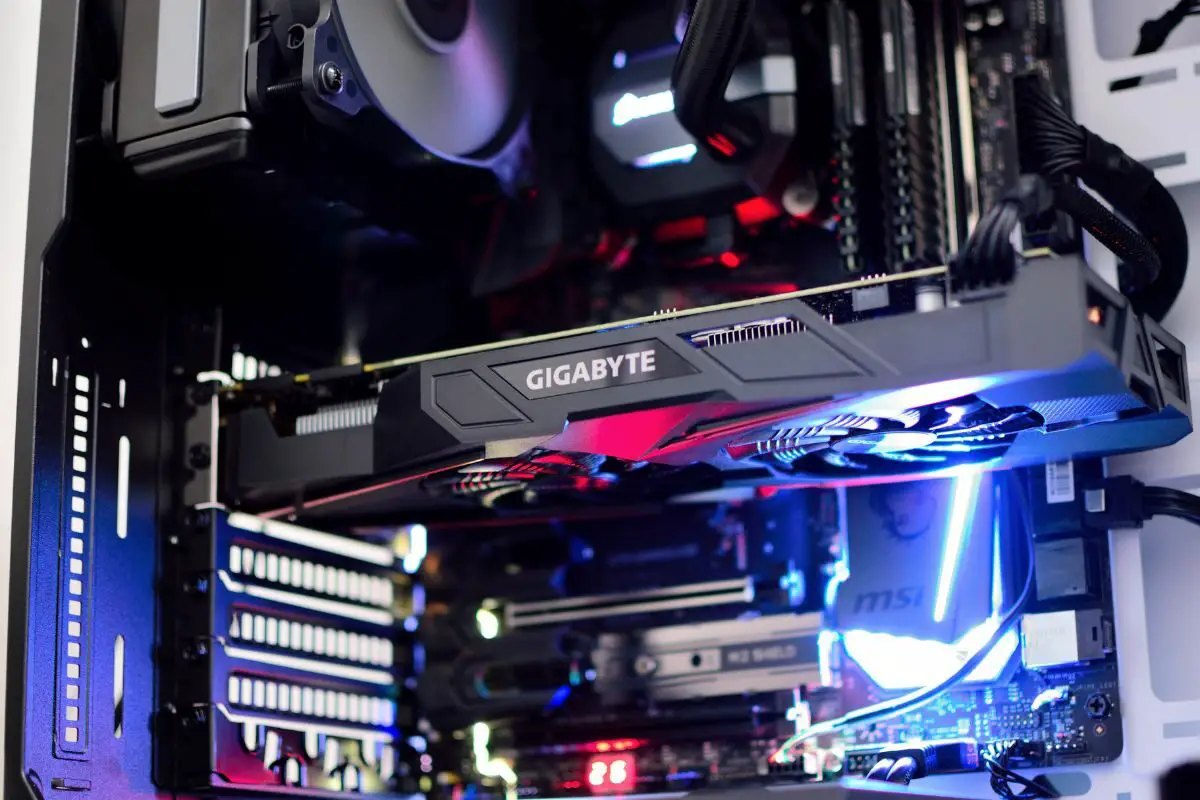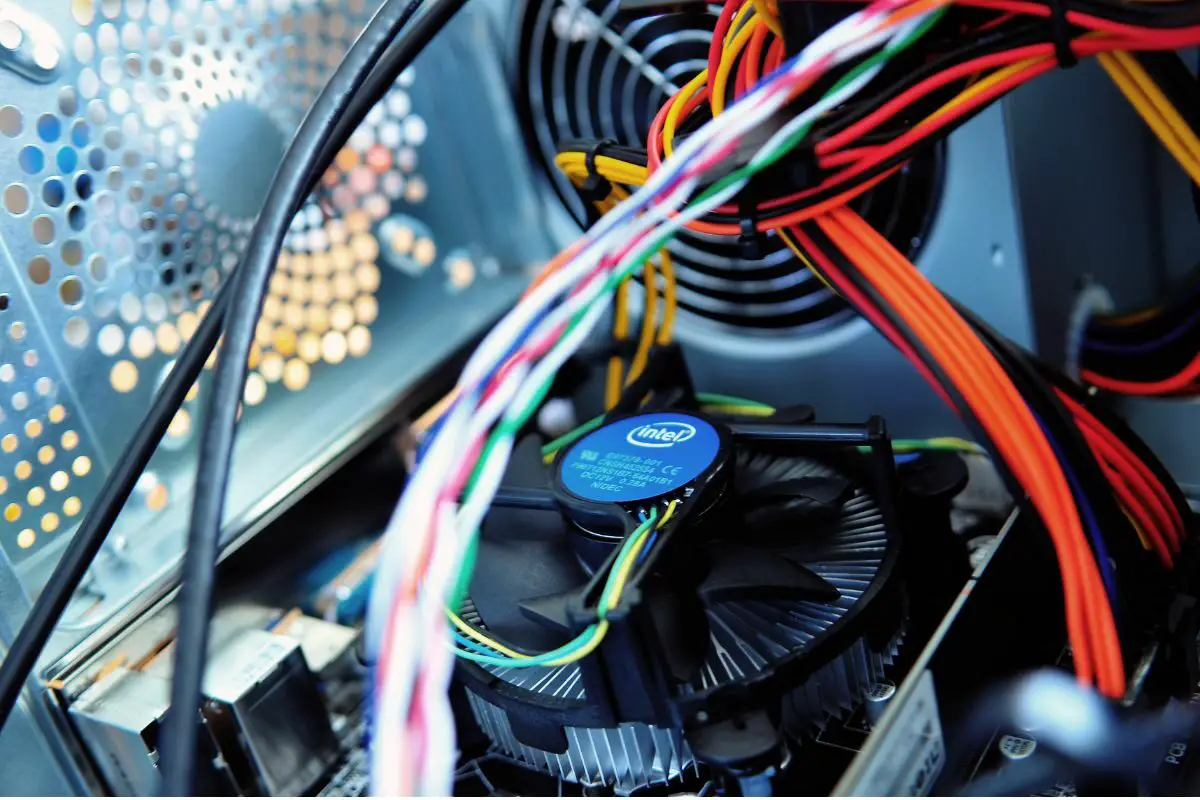
GPU coil whine refers to a humming, rattling, or high-pitched sound that you might hear from your graphics card when it is under load. It is caused by electrical currents causing vibrations in the electromagnetic coils on your GPU's circuit board.
I remember when my younger cousin complained that his computer was making an annoying noise when he was playing Fortnite. When he told me had just recently upgraded his graphics card, I realized what the culprit could be. I've had my own experiences with coil whine, so I know how annoying it can be and that has fortunately taught me how to take care of it.
So, if you're wondering what GPU coil whine is and how you can reduce it in your graphics card, this guide is for you. Let's dive right in.
Contents
GPU coil whine refers to a high-frequency sound that you might hear coming from your graphics card.
While coil whine typically sounds exactly like that — a whine — your graphics card coil whining can also sound like a rumbling or rattling too.
Coil whine is caused when the electrical current that passes through your graphics card causes certain parts, like inductor coils, to vibrate at high frequencies.
This vibration produces the coil whine sound that you hear, whether it is a high-pitched sound or a rattling.
You'll usually find graphics cards producing coil whine when there's a lot of power draw, such as when you're playing demanding games or rendering video. You're unlikely to hear coil whine when graphics cards are idle.

The electrical energy passing through graphics cards causes hardware components like inductor coils to vibrate. However, in most cases, these coils don't oscillate at an audible frequency.
In cases where they do, you end up experiencing coil whine. Your GPU is not designed to have coil whine as manufacturers build the product without this expectation, so in a sense, you can say it is not normal.
However, considering the way electricity works when passing through an electronic component like an inductor coil, coil whine can happen.
So, while you can't necessarily say it is normal to have GPU coil whine, it's not something you should fret too much about if it does happen.
So, with all this noise about coil whine, the important thing is to know how coil whine affects PC components and the damage it can potentially cause.
Well, to put it simply, coil whine is harmless. It can be annoying to hear the high-pitched background noise it produces when you're gaming, but it really doesn't pose any threat to both the GPU and the other parts of your PC.
It's up to you whether you want to take any steps to fix coil whine in your computer.
While the mechanism behind coil whine is that electrical current makes the coils oscillate at a high-frequency, producing sound, there are certain things about your GPU or other components that can make this more likely to happen.
As your GPU gets older, the parts in it begin to age and lose their efficiency.
If you never used to experience coil whine, but now you do, it could be because you're using a graphics card that is several years old and starting to show its age.
When the inductor coils on the circuit board of your GPU are soldered poorly, power delivery to them might not be as smooth as it should be.
This can potentially cause coil whine. However, GPU manufacturers tend to be very thorough with their quality control, so this is one of the less common factors behind coil whine.
When your GPU needs additional power, it draws in a lot more electricity, which can make coil whine more likely. This is why you tend to hear it under load and not when the computer is idle.
When your GPU is overclocked, you're basically pushing it past its stock power limit. A card that might not have had a noticeable coil whine even at 100% might suddenly start making noise once it is overclocked.
If the power supply in your computer is of shoddy quality or has begun to fail, it can't be relied on to produce a steady supply of power.
If there are any surges or drops in the delivery of electricity from your power supply unit, it can make your GPU likely to have a coil whine.

Although coil whine doesn't pose any danger to your computer, you might find it extremely annoying. If that's the case, there are some steps you can take to reduce coil whine from your GPU.
By resetting your GPU to its factory default clock speed, you'll prevent it from pulling in a lot more power than the manufacturer intended, which can reduce coil whine.
How you disable overclocking can vary greatly depending on the GPU or motherboard that you have.
However, you may be able to achieve this using the manufacturer's software or from your BIOS settings.
While turning off overclocking will stop your card from going over the maximum intended by the manufacturer, you may still experience some coil whine at 100%.
Fortunately, you can do what is known as "undervolting". This lets you cut off how much power is supplied to your GPU and basically lets you put a cap on how much juice it needs to suck up to work at a certain level.
I find that undervolting is an effective solution for coil whine and it works almost every time. The only problem with undervolting is that it is rather technical, and you need to be sure of what you're doing.
However, if you do it right, you'll be able to get your GPU to use less power, run at a lower temperature, make less noise from fans and coil whine, and ultimately keep the same performance as before.
How to undervolt effectively is a bit too long of a process to cover here, but this video by Optimum Tech serves as a brilliant guide to tell you all you need to know about this practice and how to do it right.
One way to stop your GPU from pushing itself to the point of coil whine is to simply limit performance in your games.
This option should work well if you don't have the technical knowledge to turn off overclocking or attempt to undervolt.
You'll have to introduce a refresh rate limit in each game you play and how you do it might vary slightly, but the general process is always the same, and goes something like this:
Here's a bonus: you can disable the V-Sync option in the same menu as earlier. This can also reduce the amount of power that your GPU will need.
This feature is used to make sure that each new frame of the game you're playing times perfectly with the refresh rate of your monitor. This can prevent screen tearing. However, it is a performance-hungry feature to have on.
Disabling V-Sync will let some weight off your GPU, but you'll probably notice that your game looks worse afterward.
Coil whine is a consequence of your GPU being an electronic device. Even with high-quality components, a surge in the power fed to the card can cause coil whine.
A bad or low-quality power supply unit can cause coil whine and your GPU might just be an unfortunate casualty.
If you can, I recommend that you try a different PSU and see whether the problem persists. If the coil whine is gone, even at high load, you'll know that your PSU was the culprit.
Surges are also likely when your PSU is pushing very close to its maximum wattage. If you're ready to upgrade the part, look out for power supplies that have a high 80 Plus rating, such as Platinum or Titanium.
These have the best efficiency and are unlikely to be the cause of any coil whine you experience.
You might not have too much luck with this method, but I've had a few occasions where I've been able to reduce coil whine after I change fan speeds on the PC.
It seems that higher temperatures make it easier for the coils to resonate and make noise. Increasing your fan speeds helps to keep a lower temperature inside your PC case, which can counteract coil whine to a degree.
You can typically use your GPU manufacturer's official software, such as MSI Afterburner, to change how fast your fan spins.

If all else fails and you feel like you can't ignore the noise level of your coil whine, it might be time to get the GPU replaced.
If it is under warranty, you might be able to get a replacement without paying a dime extra.
Coil whine is caused by electrical current passing through components on your GPU and making them vibrate, usually when the PC is under load. These vibrations are within our hearing range and come across as a high whine, a rattling, or a rumbling. Coil whine is not intended to be present, so it is not entirely normal to experience.
However, coil whine cannot cause damage to your PC, so you might be able to ignore the sound it makes. In conclusion, coil whine from your GPU can be reduced with some steps, but it really isn't a threat.
Was this article able to explain what coil whine is, and show you what you can do to fix it? If so, take a look at our related articles to learn more about your system and its hardware.
